Over the years of using Brugmansia in floriculture, numerous varieties and hybrids have been developed. They differ in flowering time, structure and height of an adult bush, color, shape and size of the flower...
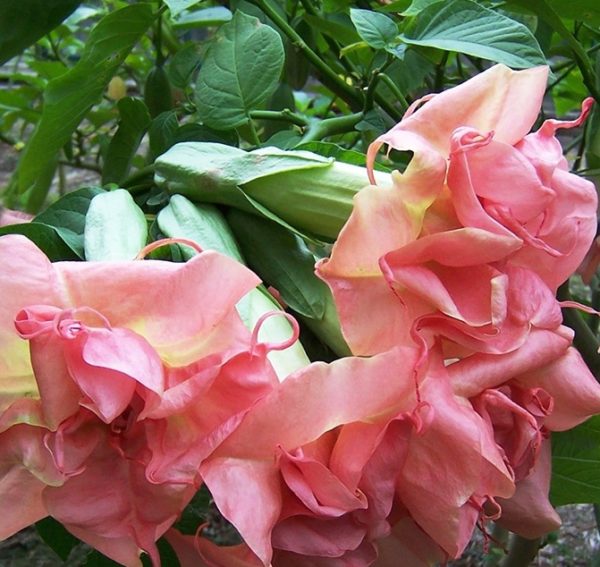
This is what Brugmansia flowers look like
In Russian conditions, representatives of all varieties of Brugmansia must winter indoors.
In the summer, many of them reveal themselves in all their strength and beauty when planted in open ground.Others feel great in the garden as a potted plant. There are small specimens for growing as a home flower.
For indoor growing
Brugmansias of the Ballerina series are the most compact varieties. The height of their bushes is from 30 to 40 cm, which makes it possible to keep plants not only in a greenhouse or winter garden, but also in an apartment. This option is very suitable for lovers of exoticism in the home interior.
In summer, Ballerinas can live both indoors or on the balcony, and outdoors in a pot. Several specimens of low-growing Brugmansias are shown in the photographs.
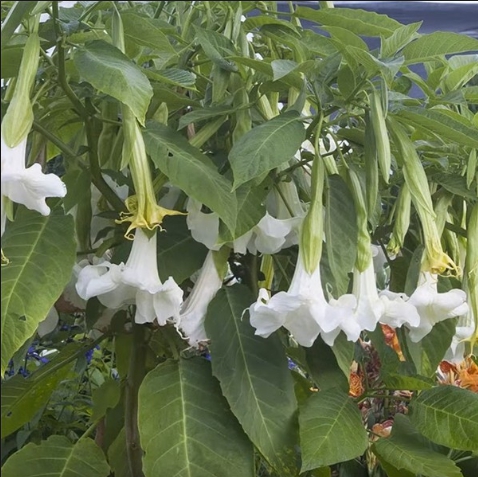
Blushing ballerina

Prima ballerina
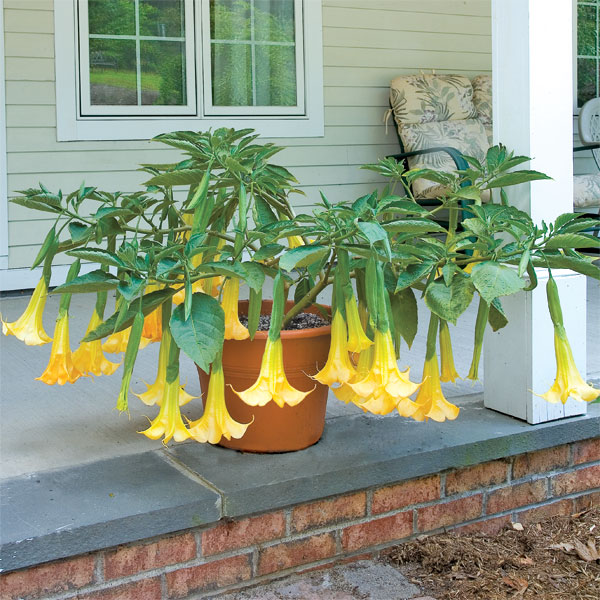
Golden ballerina
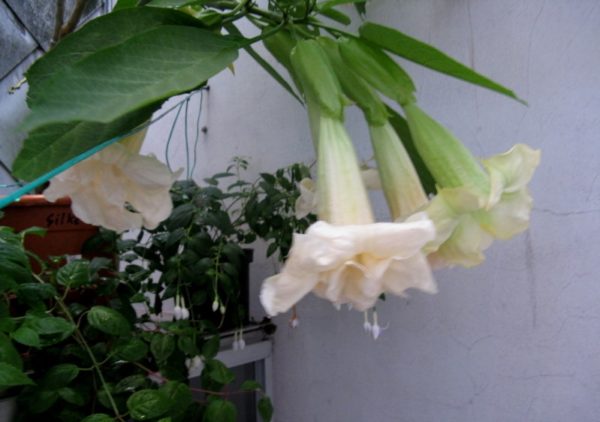
Silky Ballerina
The highest
Brugmansia red and volcanic cannot be confused with other varieties. These are the largest representatives who require quite a large space to live.
Brugmansia red (or blood red) during flowering is covered with amazing large bells with color transitions from green to yellow, then orange and bloody on the flower petals. The plant is cold-resistant and decorates the garden almost until frost.
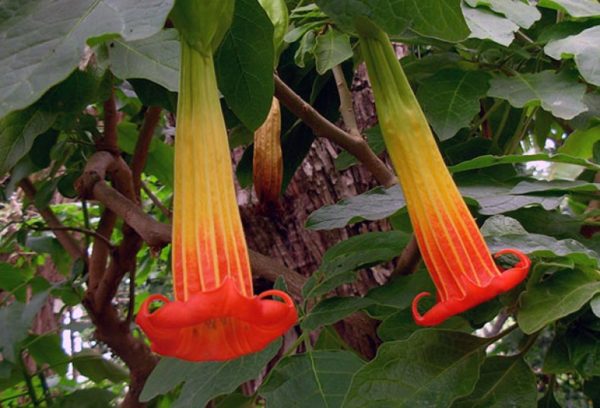
Brugmansia red
Brugmansia volcanica is rare. She requires a large space in partial shade. The flowering of this giant is very beautiful: the buds are orange, the opening flower is coral, and in full bloom it is deep pink.
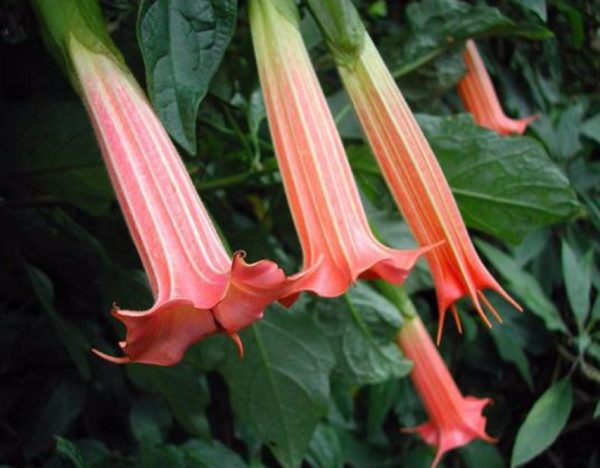
Brugmansia volcanica
Both varieties are suitable for gardeners who have sufficient space for growing them in the garden and spacious rooms for wintering.
Terry varieties
Terry Brugmansias are not very tall.They form medium-sized bushes and are suitable as potted plants. The development of these varieties occurs somewhat slower than others. Flowering occurs in the 3rd – 4th year of life.
The shapes of their flowers surprise and enchant: bells emerging from one another, flounces reminiscent of a fluffy ball gown, a flower seemingly consisting of flaps, straight and twisted... And what colors and smell! It’s a pity that the photos cannot convey the most delicate aroma of these beauties.
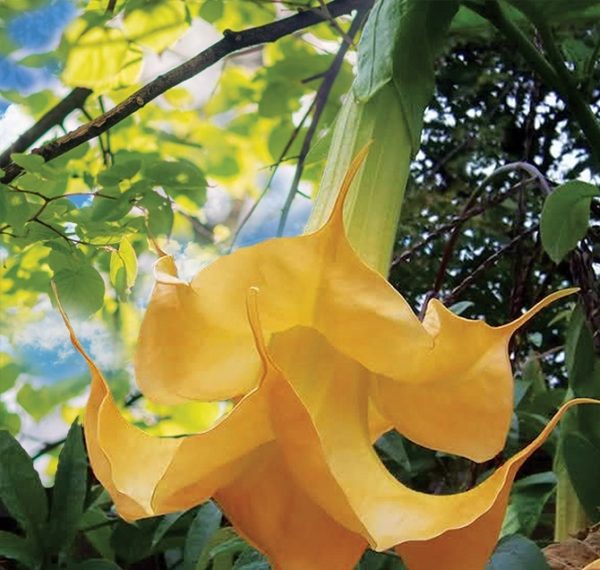
Terry yellow
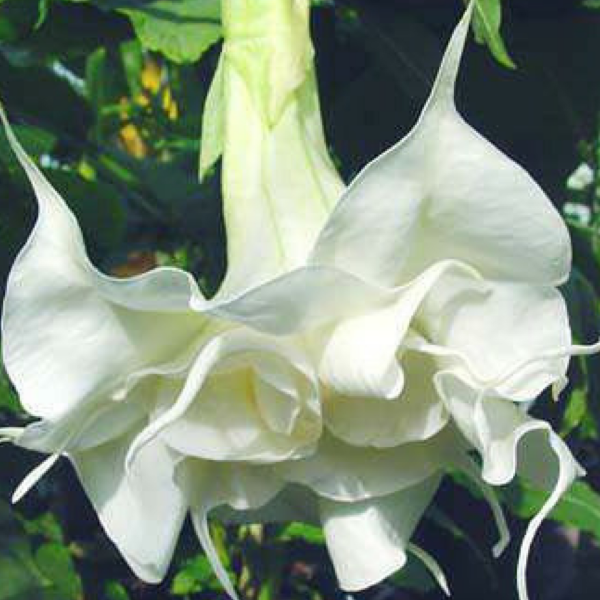
ledi Vel'veta

Brugmansia for dear
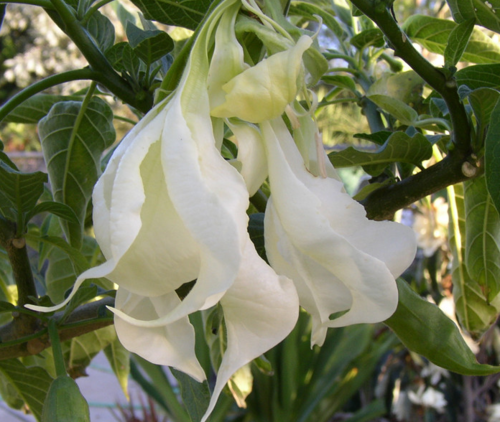
Brugmansia crushed white
There are series that can be used for group plantings. They are similar in their structure, growing conditions, and flower shapes, since they were bred on the basis of the same variety - snow-white Brugmancia (Brugmancia candida). The original color was white, later examples were created in coral, pink and the color of baked milk.
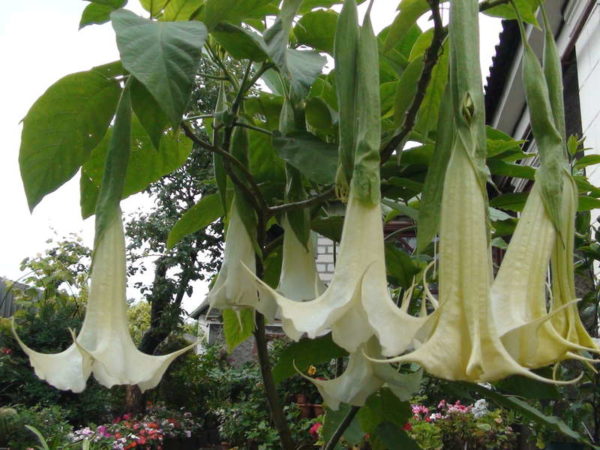
Source material - white brugmansia (Brugmancia candida)
These plants can be grown outdoors or in a container. Experiments are possible with them: if you plant two different seedlings in a pot, form them on a stem and intertwine them with each other, you will get a very original plant with flowers of different shades.
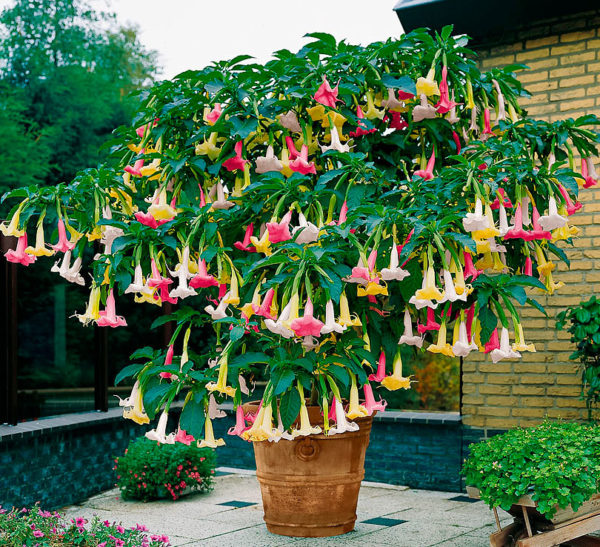
Several varieties planted in one pot
The Brugmansia trunks are not visible in the photograph, but the technique of growing in interlacing can be seen in the following photographs using the example of other plants.
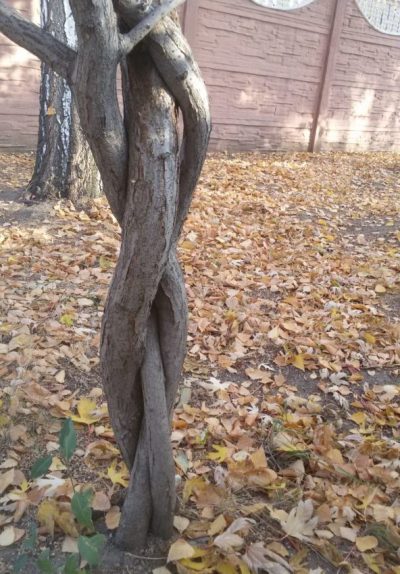
Intertwined trunks
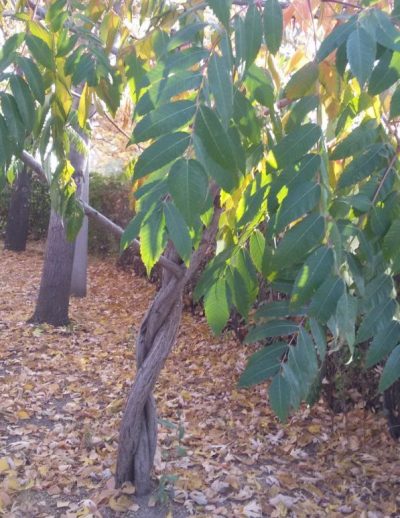
This way you can plant several varieties of plants in one pot.
Exclusive varieties
Brugmansias dusted with snow... In reality, this is impossible, but breeders were able to create such an illusion.
In the photo, Brugmansia Snowbank is the most decorative variety of all existing ones.In addition to wonderful flowers of the most delicate colors, it has extraordinary leaves.
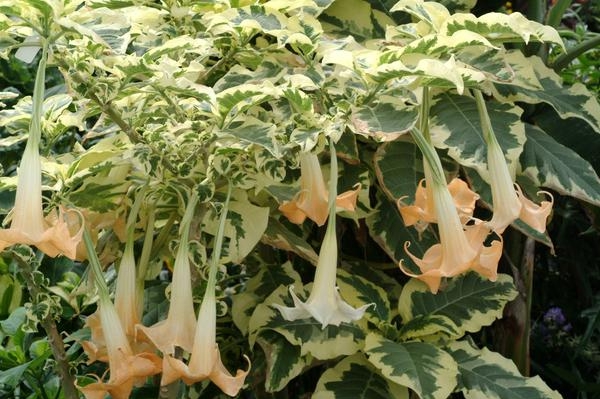
Snowdrift (Snowbank)
The young leaf is almost white, with only a small green spot in the center. As it grows, green color begins to predominate, and white moves to the edge and becomes the edge of the leaf. In some specimens, the border may become soft pink, which is even more beautiful.
In conclusion, some tips for dealing with this controversial plant:
- Brugmansia is poisonous. When caring for it, you must use gloves, avoid getting the juice on your skin, and limit access to children. Many gardeners and flower growers follow simple requirements and grow the plant for many years without harming its health.
- Gives off a smell. In most varieties it intensifies in the evening and night hours. The phenomenon may pass without consequences, or may cause headaches and allergic reactions. The room where the plant lives should be well ventilated; you should not place a flowering bush in a sleeping room.
- The plant is prolific. Flowering lasts for at least three months. Then you can collect a lot of seeds and use them for further propagation. The likelihood of getting a new plant with the desired qualities is low, since most varieties are hybrids. Its fertility is also manifested in propagation by cuttings. They take root easily, develop quickly and are guaranteed to replicate all the qualities of the mother bush.
- Requires wintering indoors, which is somewhat cumbersome. But what do temporary inconveniences mean compared to the splendor that a grateful plant will subsequently give?
- Brugmansia does not bloom immediately. To do this, she needs to reach maturity.Growing from cuttings, proper pruning and care will speed up the process. Terry varieties bloom in the 3rd – 4th season. The reward for waiting and patience will be great: firstly, satisfaction from the fruits of your labor, and secondly, the variety, luxury and beauty of wonderful plants.
Continuation of the topic:
- Growing Brugmansia from seeds
- How to care for Brugmansia outdoors and indoors
- Garden dope: planting, care and varieties with photos
- The most beautiful varieties of lilac
- Growing forsythia in the country, which varieties to choose for planting
- Choosing varieties of turf for growing in the country


 (4 ratings, average: 4,75 out of 5)
(4 ratings, average: 4,75 out of 5) CUCUMBERS NEVER GET SICK, I'VE BEEN USING ONLY THIS FOR 40 YEARS! I SHARE A SECRET WITH YOU, CUCUMBERS ARE LIKE THE PICTURE!
CUCUMBERS NEVER GET SICK, I'VE BEEN USING ONLY THIS FOR 40 YEARS! I SHARE A SECRET WITH YOU, CUCUMBERS ARE LIKE THE PICTURE! You can dig a bucket of potatoes from each bush. Do you think these are fairy tales? Watch the video
You can dig a bucket of potatoes from each bush. Do you think these are fairy tales? Watch the video
 How our fellow gardeners work in Korea. There is a lot to learn and just fun to watch.
How our fellow gardeners work in Korea. There is a lot to learn and just fun to watch. Eye trainer. The author claims that with daily viewing, vision is restored. They don't charge money for views.
Eye trainer. The author claims that with daily viewing, vision is restored. They don't charge money for views. A 3-ingredient cake recipe in 30 minutes is better than Napoleon. Simple and very tasty.
A 3-ingredient cake recipe in 30 minutes is better than Napoleon. Simple and very tasty. Therapeutic exercises for cervical osteochondrosis.A complete set of exercises.
Therapeutic exercises for cervical osteochondrosis.A complete set of exercises. Which indoor plants match your zodiac sign?
Which indoor plants match your zodiac sign? What about them? Excursion to German dachas.
What about them? Excursion to German dachas.